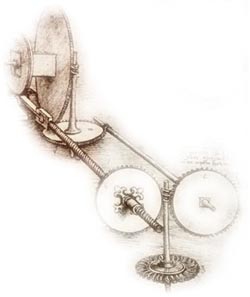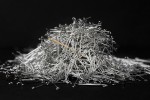on the (un)importance of technology
 ED NOTE: this article originally appeared on The Laroquod Experiment website. You can find examples of Paul’s work and commentary there. Welcome aboard!
ED NOTE: this article originally appeared on The Laroquod Experiment website. You can find examples of Paul’s work and commentary there. Welcome aboard!
As the demo clips previously posted further down this page reveal, I was originally trained to shoot on film. But most anything I do these days is on Digital Video. What technical enhancements do I use to disguise or compensate for this? (There are a lot out there that claim to do just that.) Is unadorned DV really worthy of capturing quality work?
I’ve heard independent filmmakers obsess at length about video vs. film, a debate that typically metastasises to encompass frame rates, progressive vs. interlaced, anamorphic lenses vs. HD modes, real steadicams vs. stabilisers vs. handheld. And then when the same filmmaker is on the set, and the actors, relatively neglected in the exercise of judgement, don’t deliver the best they possibly could, the director gives vague instructions; does 12 takes, either all basically identical or each increasingly stiff with frustration; knows something is missing; becomes ever more aware of all the technical people waiting around on the set; and finally, at a loss for how to correct for anything but a 3:2 pulldown, convinces himself he’s got enough, and moves on.
But he doesn’t have enough. He doesn’t have anything, and he will discover it as his heart sinks take-by-take in the editing room and his original vision evapourates, leaving a pixel-perfect string-puppet shadow version in its ruin.
The filmmaker in that editing room has just discovered the real limits of DV technology. He’s fallen into the eyeball gap.
The eyeball gap is what you get when you subtract the amount of time the filmmaker has spent looking at equipment—including equipment books, magazines, websites, and forums—from the amount of time the filmmaker has spent looking at the actors. Normally the result is a large negative number. And that’s the problem. Equipment can be a dead-end trap. I’ve fallen into it. A lot of people have fallen into it. Much progress can be made toward avoiding it by setting your priorities according to three simple rules:
- No increase in pixel resolution can reveal to an audience a portrait of reality that isn’t present in the story.
- No standard of professional lighting can force an audience to feel fear, or love, or joy, that isn’t on the actors’ faces.
- No addition of ‘filmlook’ attributes can elicit a level of artistic respect that isn’t already demanded by the plain video final cut.
The more polished your production, the emptier and more soulless your film will feel if the fundamentals of story, character, and sequence are weak; therefore, not only is an obsession with technical achievement not much of a positive for an independent movie—it can be a real negative.
All you really need is whatever it takes to consistently achieve a point of clarity between the performance and the viewer. Clear, consistent picture. Clear, consistent sound. When home video technology reached that point, with Hi-8 and then DV, it was ready. Everything else is purely optional, and whatever visual beauty you can improvise on the set is a plus, but not at the expense of your focus on performance, and performance, and performance. It’s the rarest quality out there on tape, because it’s the one thing you can’t buy off a shelf and apply mechanically or electronically. And if it’s not what you’re thinking about most of the time, don’t be too surprised when you don’t get it.




16605 812526I truly appreciated this fantastic weblog. Make sure you maintain up the excellent work. All the finest !!!! 538735
761888 203228I like this site really a lot so much great info. 64721
248574 521433Simply a smiling visitor here to share the enjoy (:, btw fantastic style and design . 234462